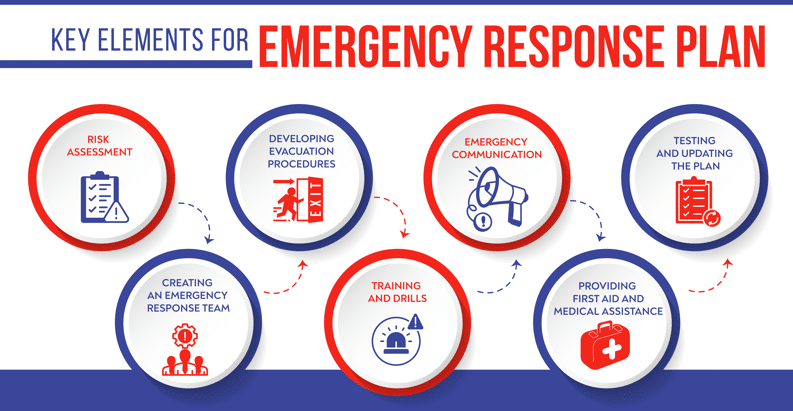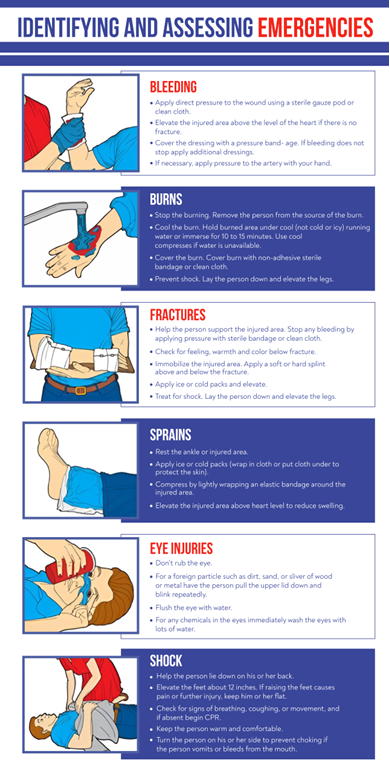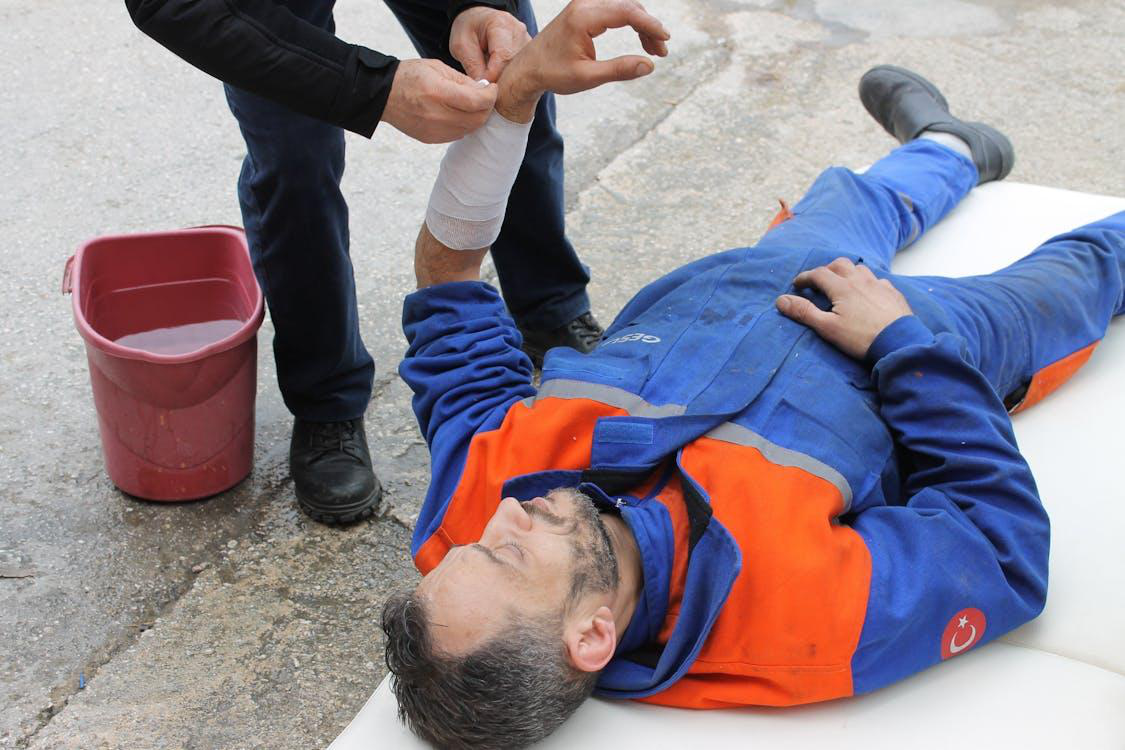In today’s fast-paced and unpredictable world, the importance of an effective emergency response plan cannot be overstated. Organizational leaders must not only prepare for potential emergencies but also ensure that their teams are adequately trained to respond swiftly and effectively. Optimizing emergency response plans through advanced training techniques can significantly enhance an organization’s preparedness. This guide explores key strategies for integrating advanced training with existing safety protocols to create a robust emergency response framework.
Understanding Emergency Response
Emergency response encompasses a range of actions taken during an incident to minimize harm, protect lives, and safeguard property. These incidents can vary widely, from natural disasters to workplace accidents. A well-structured emergency response training is essential for any organization, as it outlines procedures for responding to emergencies efficiently and effectively. However, having a plan is just the first step; the real challenge lies in executing it during high-stress situations.
The Role Of Advanced Training Techniques
Advanced training techniques play a critical role in optimizing emergency response plans. They equip employees with the skills, knowledge, and confidence needed to act decisively when an emergency arises. Here are several advanced training techniques that organizational leaders can implement:
1. Scenario-Based Training

One of the most effective ways to prepare employees for emergencies is through scenario-based training. This approach immerses participants in realistic emergency situations, allowing them to practice their response in a controlled environment. By simulating various scenarios—such as fires, medical emergencies, or natural disasters—employees can develop their critical thinking and problem-solving skills. This type of training not only reinforces theoretical knowledge but also helps build muscle memory, making it easier for employees to react appropriately when faced with real emergencies.
2. Incorporating Technology
Technology can significantly enhance training effectiveness. Utilizing virtual reality (VR) or augmented reality (AR) can create immersive training experiences that closely mimic real-life emergencies. For example, VR can simulate a fire evacuation, allowing participants to practice navigating safely under stress. Additionally, online training platforms can provide flexibility for employees to learn at their own pace, accommodating various schedules and learning styles.
3. Cross-Training Employees
Cross-training employees in multiple emergency response roles can improve overall organizational resilience. When team members are trained in various roles, they can fill in for each other during emergencies, ensuring a more coordinated response. For instance, a frontline worker trained in basic first aid can provide immediate assistance while waiting for advanced first aid responders to arrive. This versatility is especially valuable in larger organizations where roles may be siloed. Learning over and over is a crucial stage in emergency training.

4. Regular Drills And Assessments
Conducting regular emergency drills is vital for maintaining preparedness. These drills allow organizations to assess their response plans and identify areas for improvement. After each drill, conducting debriefing sessions where participants can discuss what worked and what didn’t is essential. This feedback loop encourages continuous improvement and helps refine emergency response plans.
5. Integration With Existing Safety Protocols
To optimize emergency response plans, it’s crucial to integrate advanced training techniques with existing safety protocols. This integration ensures that all employees understand how emergency procedures fit into the broader safety framework. For instance, if a workplace has specific protocols for hazardous materials, training should emphasize how to respond effectively in emergencies related to those materials. By aligning training with established safety protocols, organizations can create a cohesive response strategy that is easier for employees to understand and follow.
6. Leveraging Advanced First Aid Training
Investing in advanced first aid training is an essential component of emergency response optimization. Courses such as advanced first aid, intermediate first aid, and basic first aid equip employees with the necessary skills to handle medical emergencies. Training in these areas not only enhances individual confidence but also fosters a culture of safety within the organization. Employees who are trained in advanced first aid are more likely to take proactive measures during emergencies, improving outcomes for those affected.
7. Emphasizing Mental Health Training
Emergency situations can be psychologically taxing for employees. Therefore, incorporating mental health training into emergency preparedness is critical. Employees should be trained to recognize the signs of stress and trauma in themselves and their colleagues, along with strategies for coping with these challenges. This training can enhance team resilience and support a healthier work environment.
Developing A Comprehensive Emergency Response Framework
For organizational leaders, developing a comprehensive emergency response framework requires careful planning and collaboration. Here are key steps to consider:

1.Assess Risks and Needs
Conduct a thorough assessment of potential risks and needs within the organization. Understanding the unique challenges and vulnerabilities your organization faces is crucial for tailoring an effective emergency response plan. Consider factors such as the nature of the business, geographical location, and the specific roles and responsibilities of employees.
2.Engage Employees in the Process
Involve employees in the development and optimization of emergency response plans. Engaging staff in discussions about potential risks and response strategies fosters a sense of ownership and accountability. Employees who feel invested in the process are more likely to be committed to following the established protocols during emergencies.
3.Create Clear Communication Channels
Effective communication is vital during emergencies. Establish clear communication channels that ensure all employees are informed of procedures and updates in real time. Utilize tools such as mass notification systems, mobile apps, and internal communication platforms to disseminate information quickly and efficiently.
4.Evaluate and Update Plans Regularly
Emergency response plans should not be static. Regularly evaluate and update plans to reflect changes in the organization, new regulations, and lessons learned from drills and real incidents. This iterative process ensures that emergency response plans remain relevant and effective over time.
Incorporating Community Resources and Partnerships
An often-overlooked aspect of emergency response planning is the integration of community resources and partnerships. Collaborating with local emergency services, such as fire departments, police, and medical facilities, can enhance the effectiveness of an organization’s emergency response plan. These partnerships can provide valuable resources, support during drills, and insights into community-specific risks and response strategies.
1. Building Relationships With Local Agencies
Establishing relationships with local emergency management agencies can help organizations better understand the resources available in their community. Engaging in joint training exercises with these agencies can enhance coordination and communication during actual emergencies.

2. Participating In Community Emergency Planning
Encouraging employees to participate in community emergency planning initiatives can foster a greater understanding of the broader emergency response landscape. By being involved in these efforts, employees can gain insights into community resources and response strategies, which can be applied within their organization.
Fostering A Culture Of Safety
Ultimately, the effectiveness of an emergency response plan hinges on the culture of safety within the organization. Leaders must prioritize safety at all levels, encouraging open communication about risks and safety concerns. By creating an environment where employees feel comfortable discussing potential hazards, organizations can proactively address issues before they escalate.
1. Celebrating Safety Achievements
Recognizing and celebrating safety achievements can reinforce the importance of preparedness within the organization. Consider implementing recognition programs for employees who demonstrate exceptional commitment to safety, whether through participation in training or by contributing to the development of emergency response plans.
2. Continuous Education And Awareness
Safety is not a one-time effort; it requires ongoing education and awareness. Organizations should regularly update employees on emergency response procedures and best practices. This can be achieved through workshops, seminars, and digital resources that reinforce the importance of being prepared.

Optimizing emergency response plans with advanced training techniques is essential for organizational leaders committed to safety and preparedness. By implementing scenario-based training, leveraging technology, cross-training employees, conducting regular drills, and integrating advanced training into existing safety protocols, organizations can significantly enhance their emergency response capabilities.
Moreover, investing in advanced first aid training and emphasizing mental health awareness can create a more resilient workforce ready to handle emergencies effectively. As leaders, the responsibility to protect employees and ensure their well-being during crises rests on your shoulders. By fostering a culture of preparedness and continuous improvement, you can enhance your organization’s readiness to respond to emergencies, ultimately saving lives and protecting resources.
Ready To Enhance Your Safety Training? Reach Out!
For those interested in bolstering their emergency response capabilities, consider enrolling in the comprehensive first aid training courses offered by Metro Safety Training. With a range of courses including advanced first aid, intermediate first aid, and confined space training, your organization can cultivate a skilled team prepared for any emergency. Investing in these advanced training techniques is not just a safety measure; it is a commitment to creating a safer, more resilient workplace for everyone. Contact us today.







